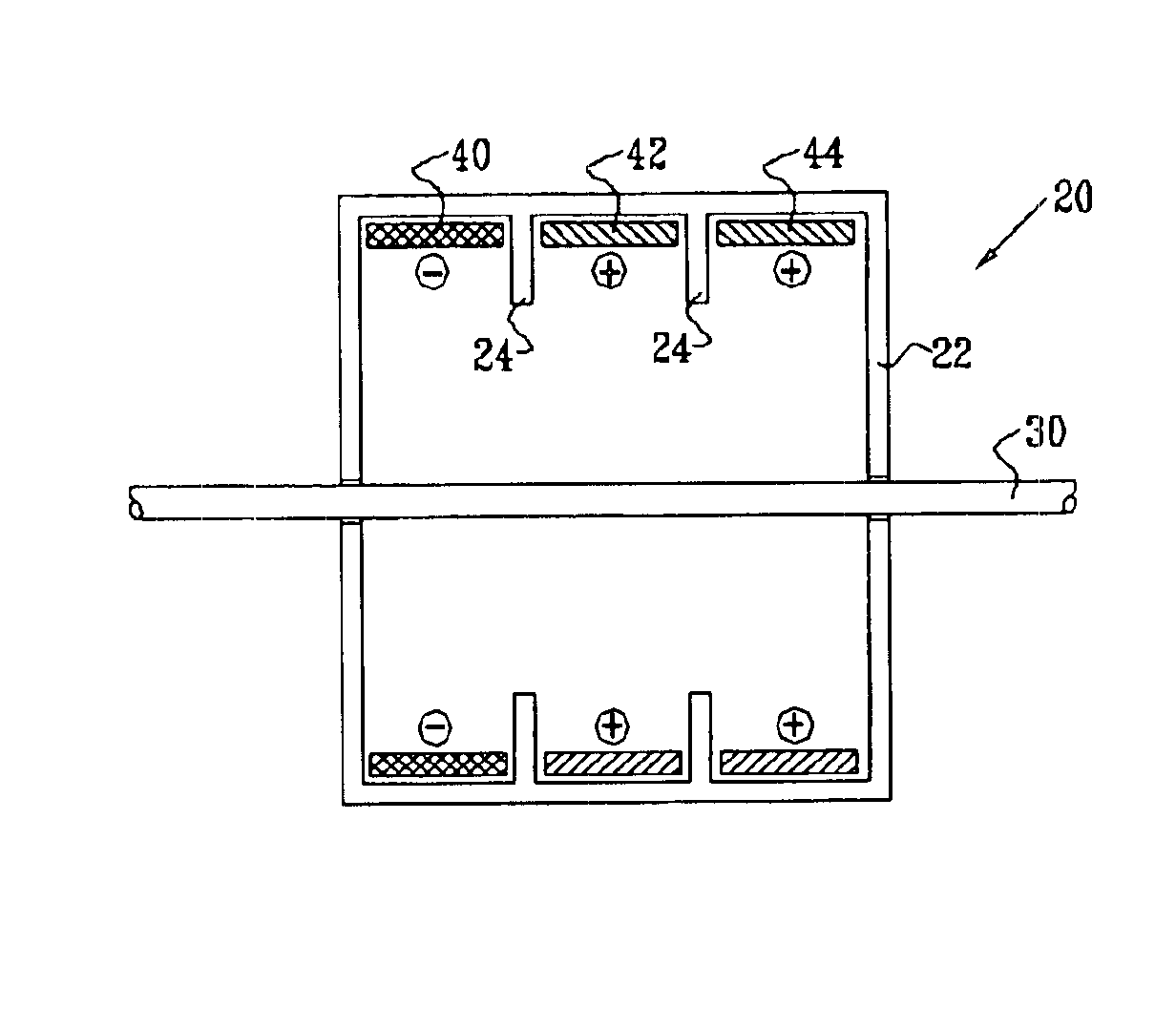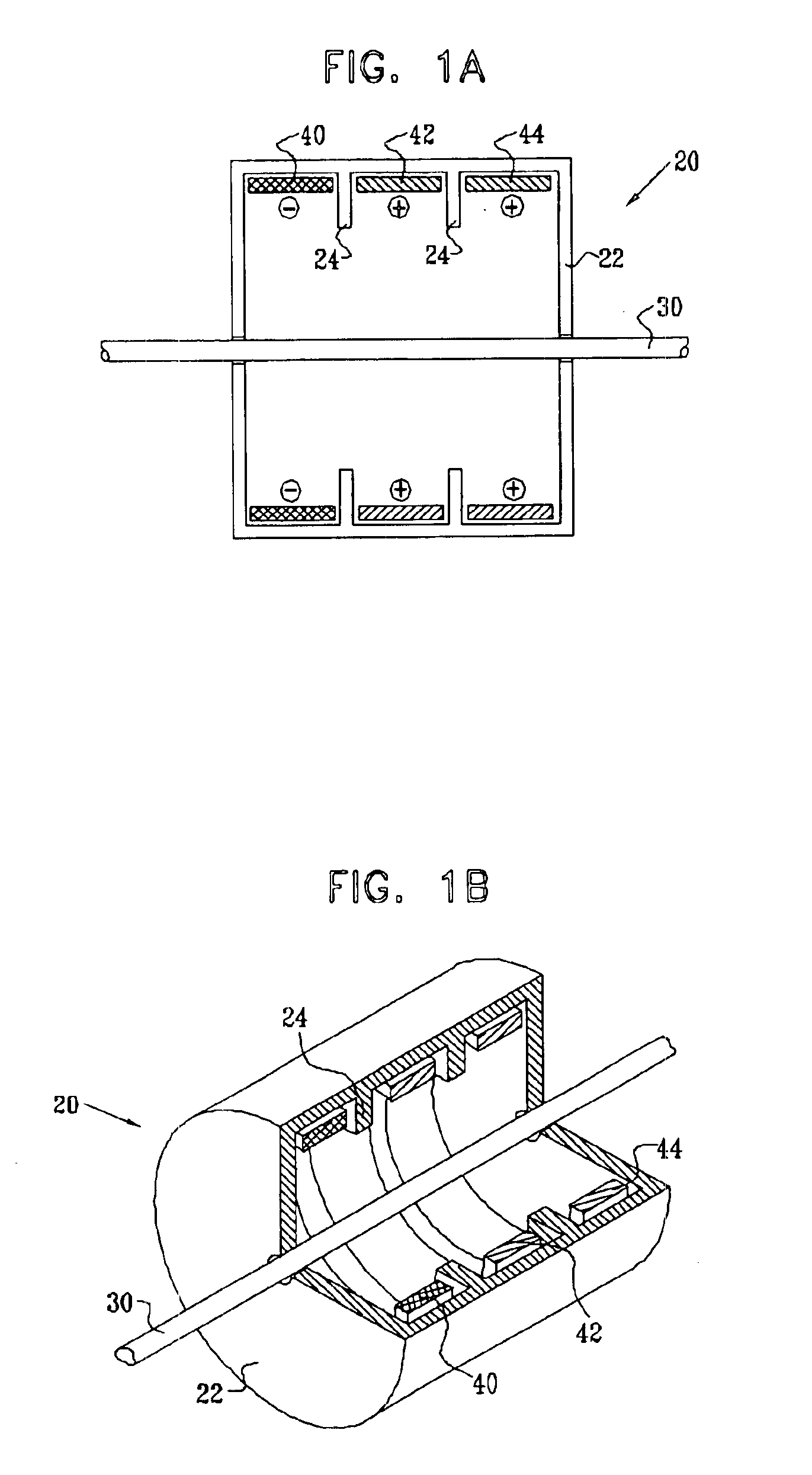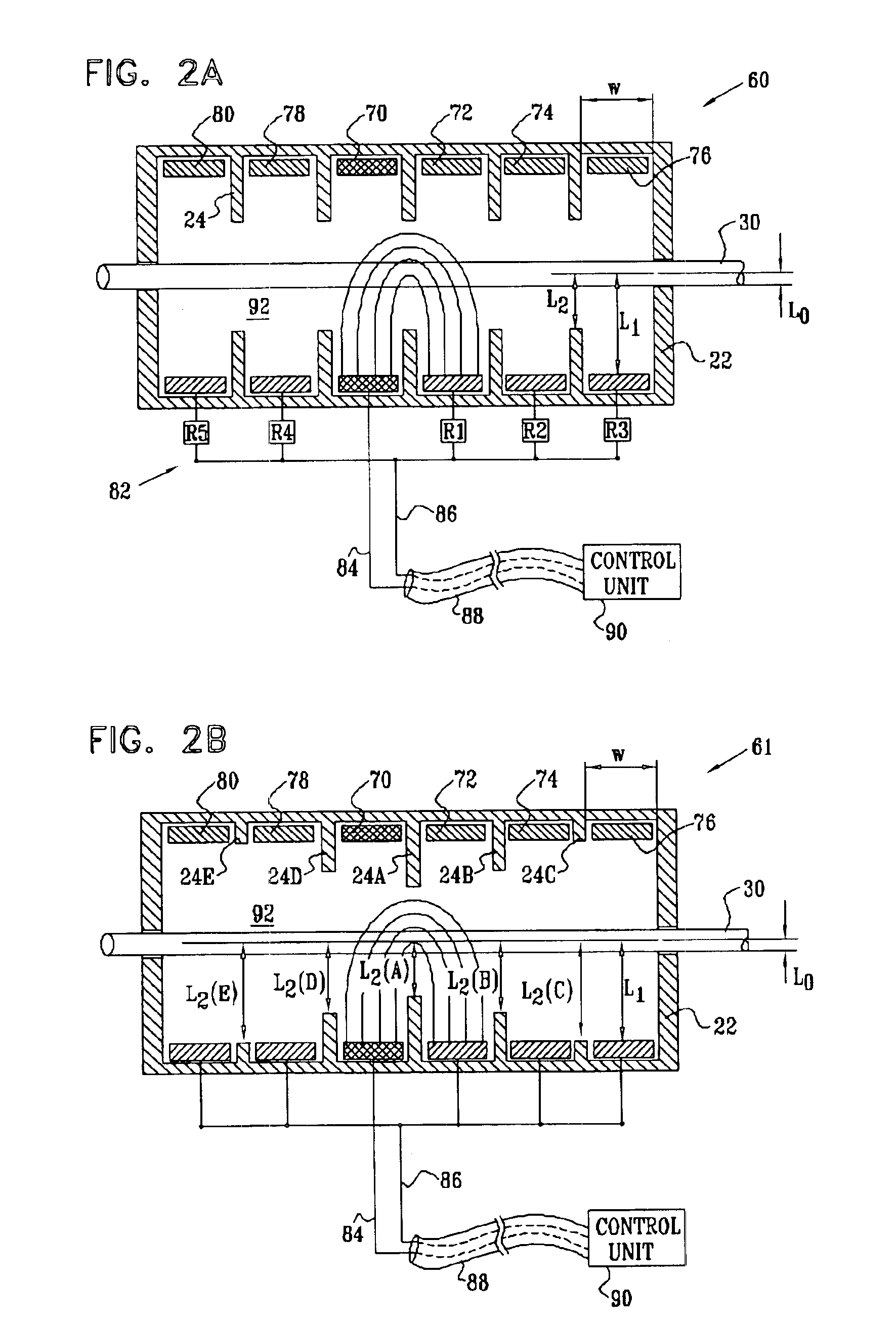Electrode assembly for nerve control
a nerve and electrode technology, applied in the field of nerve stimulation regulation, can solve the problems of muscle fatigue and poor force gradation, and achieve the effect of stimulating a nerv
- Summary
- Abstract
- Description
- Claims
- Application Information
AI Technical Summary
Benefits of technology
Problems solved by technology
Method used
Image
Examples
Embodiment Construction
[0134]Reference is now made to FIGS. 1A and 1B. FIG. 1A is a schematic, cross-sectional illustration of an electrode assembly 20 for applying current to a nerve 30, in accordance with a preferred embodiment of the present invention. FIG. 1B is a schematic pictorial illustration of electrode assembly 20, in accordance with a preferred embodiment of the present invention. It is noted that although the various electrode assemblies shown in the figures generally contain cylindrical configurations of their elements, other geometrical configurations, such as non-rotationally symmetric configurations, are also suitable for applying the principles of the present invention. In particular, a housing 22 of the electrode assembly (and the electrodes themselves) may form a complete circle around the nerve, or it may define an arc between approximately 0 and 90 degrees, between 90 and 180 degrees, between 180 and 350 degrees, or between 350 and 359 degrees around the nerve. (One such preferred em...
PUM
 Login to View More
Login to View More Abstract
Description
Claims
Application Information
 Login to View More
Login to View More - R&D
- Intellectual Property
- Life Sciences
- Materials
- Tech Scout
- Unparalleled Data Quality
- Higher Quality Content
- 60% Fewer Hallucinations
Browse by: Latest US Patents, China's latest patents, Technical Efficacy Thesaurus, Application Domain, Technology Topic, Popular Technical Reports.
© 2025 PatSnap. All rights reserved.Legal|Privacy policy|Modern Slavery Act Transparency Statement|Sitemap|About US| Contact US: help@patsnap.com



